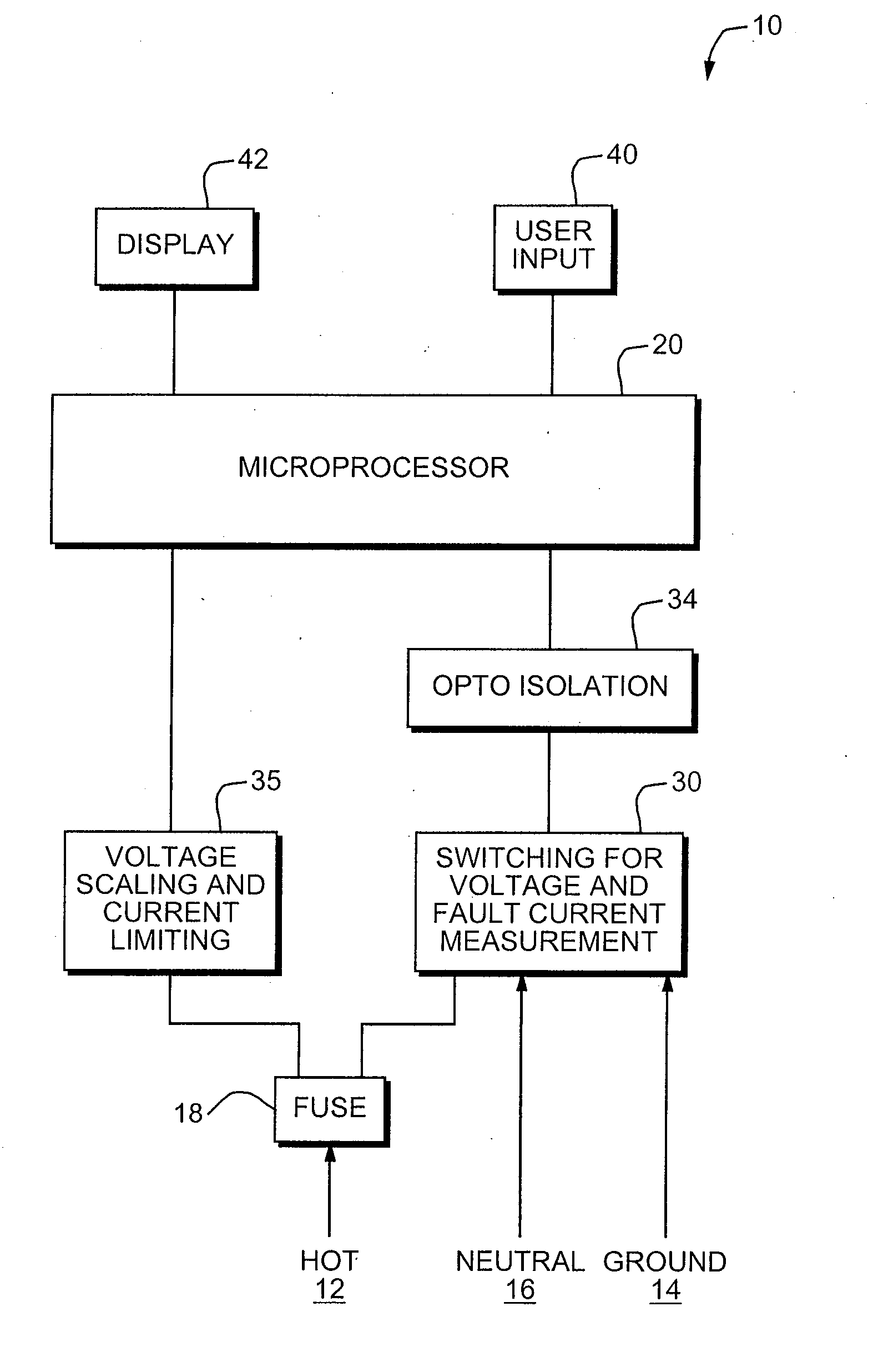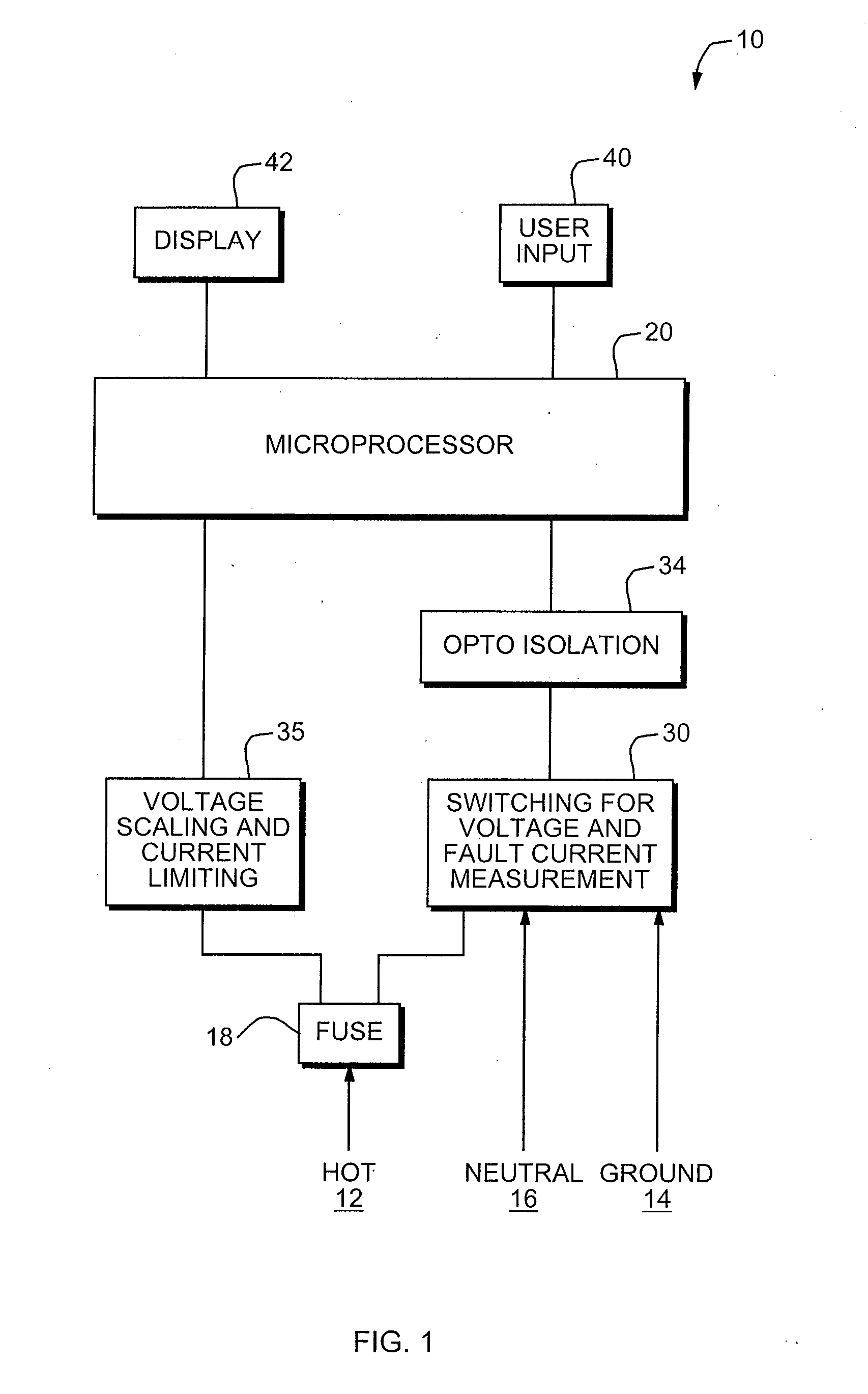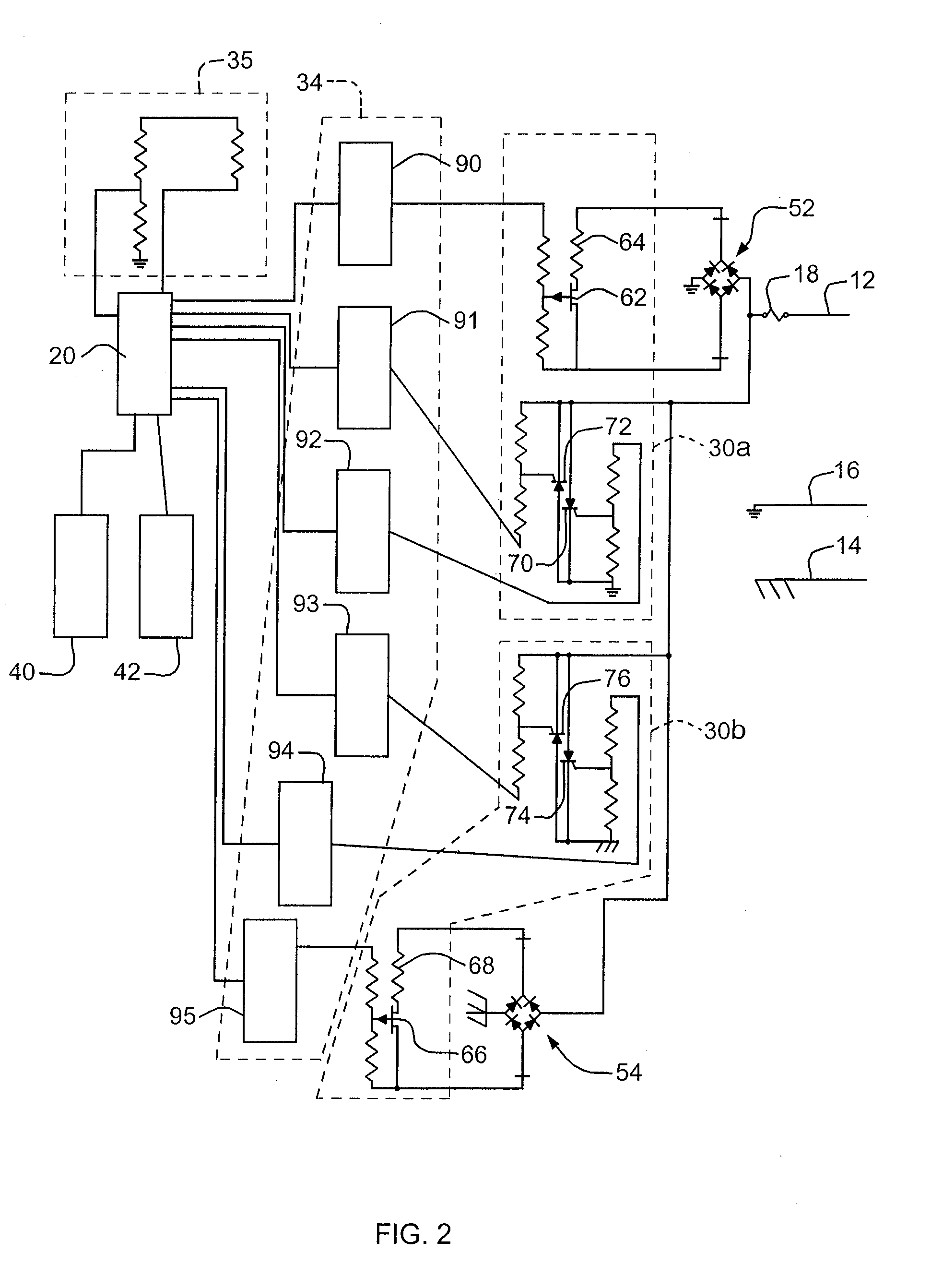Device and Method for Testing an Electrical Power Branch Circuit
a technology for testing circuits and circuit breakers, applied in measurement devices, parameter calibration/setting, instruments, etc., can solve problems such as large disparity in short-circuit and ground fault protection provided from premises to premises, no test device is capable, and receives rapid breakers
- Summary
- Abstract
- Description
- Claims
- Application Information
AI Technical Summary
Benefits of technology
Problems solved by technology
Method used
Image
Examples
Embodiment Construction
[0025] In a preferred embodiment, the inventive device and method is included as a part of a hand-held tester plugged into 120 VAC receptacle outlet or otherwise electrically connected to a 120 VAC outlet protected by a 15 or 20 Amp circuit breaker. In a preferred embodiment, the device is powered from the branch circuit, and has an internal battery (not shown in the drawings) for back-up power to maintain data integrity and continuity of operation when a breaker is tripped. The circuitry is protected by an overcurrent protective device (e.g., a fuse) with characteristics which allow one cycle bursts of predetermined current levels, but will operate to open the circuit before conductor overheating in the branch circuit-under-test occurs. For example, a 15 A fuse may be used in the preferred embodiment of FIG. 2.
[0026]FIG. 1 is a functional block diagram of an embodiment of the device of the invention that can also accomplish the method of the invention. System 10 makes circuit and ...
PUM
 Login to View More
Login to View More Abstract
Description
Claims
Application Information
 Login to View More
Login to View More - R&D
- Intellectual Property
- Life Sciences
- Materials
- Tech Scout
- Unparalleled Data Quality
- Higher Quality Content
- 60% Fewer Hallucinations
Browse by: Latest US Patents, China's latest patents, Technical Efficacy Thesaurus, Application Domain, Technology Topic, Popular Technical Reports.
© 2025 PatSnap. All rights reserved.Legal|Privacy policy|Modern Slavery Act Transparency Statement|Sitemap|About US| Contact US: help@patsnap.com



